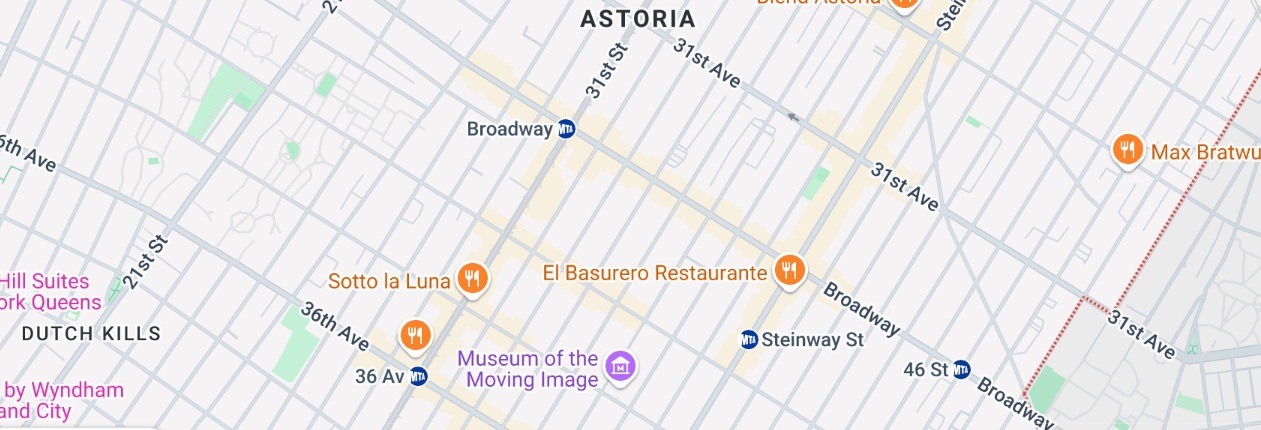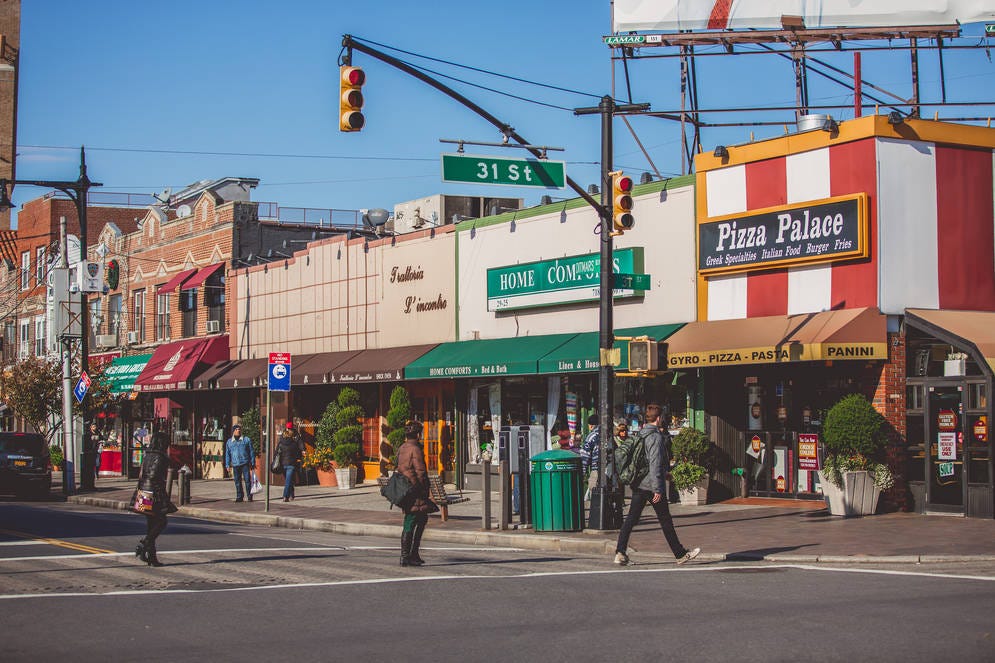I spent the last four days in Astoria. It’s part of New York City, specifically, of Queens. Do you know anything about it? Have you ever been there?
I lived in New York for thirty-five years, and I have to admit I only went to Astoria a few times, mostly for Greek food. There is a part of Astoria, in and around Steinway Street particularly, that’s heavily Greek and has lots of, well, Greek restaurants.
Suffice it to say, I don’t—or didn’t—know Astoria well. That is, until my daughter moved there a few years ago. And until a good friend, David Smith, rented an apartment in Astoria and graciously lets me stay there when I come to New York.
It’s a pretty name, when you think of it. Three vowels in so short a space gives it a musical, almost Italianate sound. As-tor-i-a. You could sing it. It’s almost an anthem.
Here are some maps, getting progressively more microscopic, showing Astoria and where it is in relation to the Bronx, Manhattan, Brooklyn and the rest of Queens. FYI.
Astoria is a middle class enclave, for the most part. You don’t see a lot of trappings of wealth there. You see small stores, working people, nothing terribly fancy. You could say that’s ironic, since Astoria was named after John Jacob Astor (1763-1848), one of the world’s richest men at the time. Local officials thought, with this naming gift, Astor would invest in the area. He did not. The name remained, though.
Some parts of Astoria, in fact, are a bit grimy. Not all. There seems to be a difference in the look of Astoria north of the Grand Central Parkway, the road that leads to and from the Robert F. Kennedy Bridge (forever known to old timers like me as the Triborough Bridge) that runs through it. It’s a bit nicer north of the GCP. I stayed on the south side.
Astoria is a place of neighborhoods, some more appealing than others, but all, in their way, to human scale. When I walk its streets, I see working people. I see mothers with shopping carts, I see students. Hardly anyone is dressed like the typical suited businessman or businesswoman you encounter so frequently in Manhattan. And you don’t see any inventively-dressed young people looking so cool sartorially it makes you feel painfully plain, as you would, say, in Brooklyn. People in Astoria dress for the job. You sense struggle here. The daily hours put in for daily bread. The edges are rough. Family is big.
You can still, like Manhattan and Brooklyn, find an array of ethnic foods here, though. It’s not monochrome. In my little neighborhood alone, I found Bangladeshi, Brazilian, Dominican, Indian, Italian, Greek and even a Welsh restaurant. I can travel metaphorically here.
My first stay in Astoria a few years ago, I didn’t find it that appealing. It seemed undistinguished, somewhat dull. My opinion changed. I grew to be very fond of its ordinariness. Of its unpretentiousness. It’s more likely that a locksmith lives here than a hedge fund manager. If you feel comfortable with middle class people, you feel comfortable in Astoria. You do see young people here, though, from outside New York, here for the cheaper rents and the ease.
It’s not that densely pedestrian compared to Manhattan, either. Walking its streets is a pleasure. Not once did I have to stop, dodge, shift, defer or adjust to another pedestrian coming my way because there was not enough room for both of us. That’s standard in Manhattan. You can feel like you’ve run an obstacle course after just a five-minute walk in Manhattan. It’s exhausting.
A funny thing happened to me this trip. All of my thirty-five years in New York I lived in various parts of Manhattan. So, yes, on this trip I took the subway—the N Train, to be specific, the stop 36th Avenue—to Manhattan. I went to the Metropolitan Museum. I went to Chinatown. I met an old friend, and we went to an exhibit at the New York Public Library.
But twice, when I had intended to take the train to Manhattan—not a long ride, by the way—I changed my mind and stayed in Astoria. I just didn’t want to fight the aggression, the crowds and the pace, the furious energy of Manhattan. I walked around my neighborhood instead. I visited my daughter in hers. I was relaxed, I was calm. I didn’t want Manhattan. I wanted Queens. I wanted Astoria.







Very enjoyable read, Richard. The name Astoria has always been attractive to me. Friends lived there at some point and had a good situation. For me the lesson of your story seems to be that for every place you visit, you are the one who makes it what it is.
Love this, Richard, and love Astoria too. My daughter lived there for a while when her son, now 18, was a baby. They lived in a former parachute factory, not far from the Olympic sized swimming pool that's a feature of a famous Robert Moses park and around the corner from a spectacular Greek restaurant where the grandson had his first restaurant food in the form of Greek kolokithokeftedes, a long word for delicious zucchini fritters. They had a distant view of the long curve of Amtrak rails leading to the distinctive arch of the Hellsgate Bridge.
But I want to grab your space to tell a story told me by my late friend, PP-winning journalist Nan Robertson. Nan and her husband were on a private cruise of some Greek islands (private meaning not a big cruise vessel but a small golet that carries maybe six passengers. Moored in the most hauntingly beautiful bay, crystalline waters, islands dotted around, white and blue chapels on hill tops, red-tiled villages, distant olive groves, utterly enchanting. Out from shore rowed a boat with a very young man at the oars. Came up vessel side and shouted: Hello! Americans! They peered over and there was a teenaged boy with a huge smile. "Americans!" he cried, "welcome. Tomorrow I join you. Tomorrow I go to Astoria, Queens." He paused to let the news sink in and then said, wistfully, "Is it very beautiful, Astoria, Queens?"
Well, yes, young Greek, to some of us it is indeed very beautiful! And I hope it was to you, too.